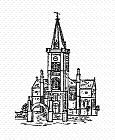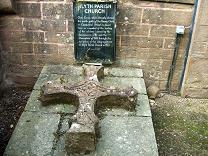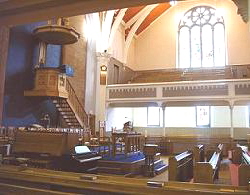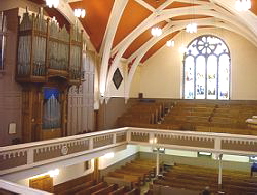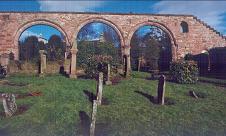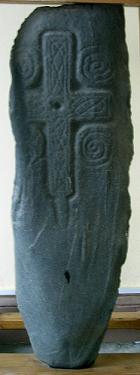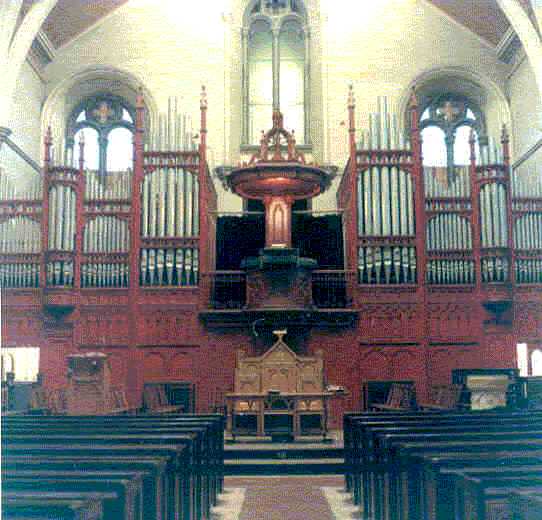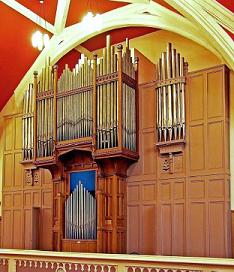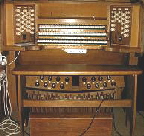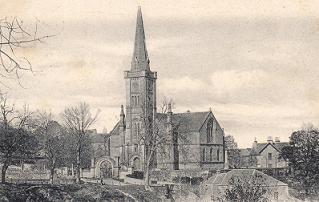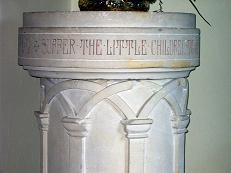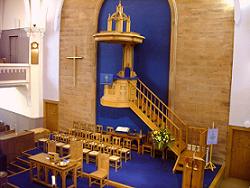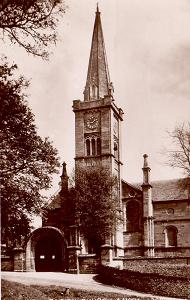|
|
|
|
 |
There has been a church in Alyth for many centuries. The first was founded in the sixth century by St. Moluag and was one of the earliest places of Christian worship in this part of Perthshire. The Arches, further along the High Street, are all that remains of the first stone church ever to be built in this district. Robert the Bruce is said to have worshipped there in 1326. The current building in an equally prominent position was completed in 1839 to the grand design of an Edinburgh architect, Thomas Hamilton. It is Gothic in style, with Romanesque influences, especially in the windows, and has an unusually high spire.
|
|
|
 |
 |
|
Vestibule A reminder of the pre-Victorian past stands just inside the front door. The Pictish Stone has been described as “One of the church’s most valuable treasures...a reminder of the early mission days when St Moluag and his faithful band exerted a great influence over this district from the original Alyth church”. Dating from the 8th or 9th century, the stone is a natural slab of gneiss (a crystalline rock consisting of quartz, feldspar and mica) upon which is incised a simple Latin cross with interlacing ornamentation, the work of some of the early Celtic artists. The design shows a beginning of the movement in art that developed into the highly symbolic Celtic Cross. On the other side of the stone is a “double disc”. Opposite is a white, carved stone baptismal font, a gift from the Sunday School first used in July 1908, and incorporating an 18th century pewter basin. The War Memorial, to those killed in the Great War who were connected to the congregation was unveiled in October 1922.
|
|
|
 |
 |
|
Church To the right of the Sanctuary, the Lectern stands as a Memorial to those killed in the Second World War. The design from the Pictish Stone has been carved into the front panel, and may also be identified on the chairs immediately behind the Communion Table. The high Pulpit and sounding board, both of yellow pine, used to be situated on the opposite wall, until a major refurbishment in 1975 turned the interior around, and allowed much-needed halls to be incorporated beyond the new wall behind the pulpit. The memorial Stained Glass windows all date from the early 20th century.
|
|
 |
 |
|
The Funeral escutcheon, on the balcony to the right of the organ pipes commemorates the death of Sir George Ramsay, sixth baronet of Bamff, in a duel at Musselburgh, in April 1790 - one of the last duelling deaths in Scotland.The three manual pipe organ was originally built by Harrison and Harrison in 1890 for Dysart Parish Church, in Fife and was extensively refurbished in 2005 by Forth Pipe Organs Ltd. It was installed in Alyth Parish Church in 1978 after a serious fire destroyed the previous organ, and part of the roof, in February 1977. An axe presented by the Fire Brigade at that time may be seen in the Hall of Friendship, along with various other pictures and portraits.
|
|
|
 |
 |
|
Upstairs, in the North Gallery, the window depicting the life of Christ commemorates the Revd Colin Symers (minister 1773-1817). Designed by Stephen Adam of Glagsow, it was unveiled by the Countess of Airlie in 1905. Downstairs on the left hand side, the McGibbon window by Ballantyne of Edinburgh also dates from 1905. In the centre, the Robertson window was completed by Stephen Adam in 1906. On the right, the Ramsay window incorporates local scenes. Up in the opposite South Gallery, the Duncan of Jordanstone Memorial window is considered the best example of stained glass in the church. Designed by Henry Holiday of London, it was dedicated in 1908, and takes as its theme The Man of Sorrows. Downstairs, from left to right, are the Alexander Mitchell and Barbara Duncan Memorial window, the Charles Simpson Memorial window of 1913, also designed by Henry Holiday of London, and a window commemorating the Revd James Meikle (minister 1897-1933). Designed by Miss Kemp of Edinburgh in 1948, it depicts the Parable of the Sower, and features the local raspberry crops.
|
|
|
|
|


